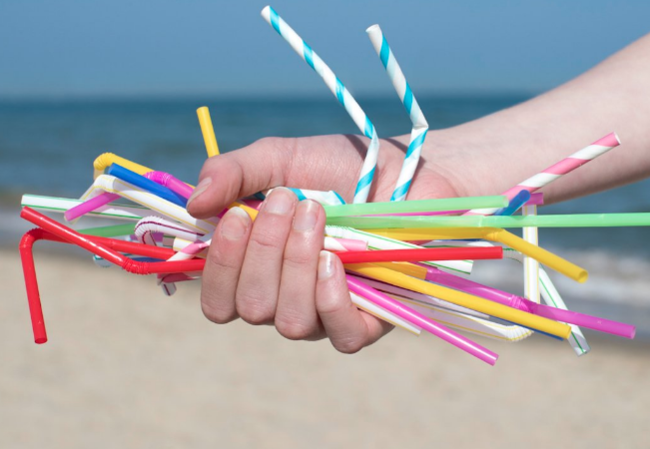We may earn revenue from the products available on this page and participate in affiliate programs. Learn More ›
Ditch Plastic Bags
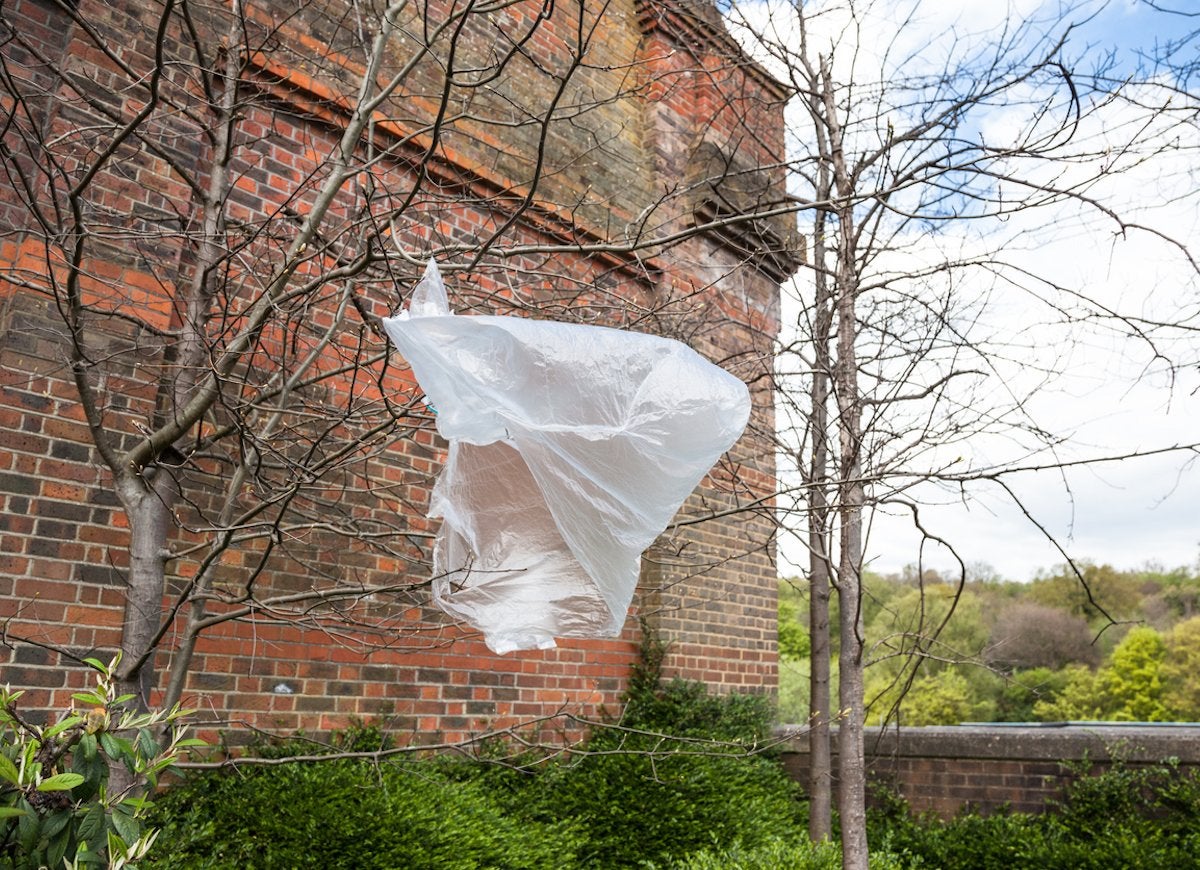
A whopping 1 trillion plastic bags are used around the world every year, according to the Earth Policy Institute, and those plastic bags take 1000 years to decompose, and all too often pollute our city parks, beaches, and even the fish we eat. Opt out of producing plastic bag waste by carrying your own reusable shopping bags. Want to go the extra mile? Pick up a set of reusable produce bags to contain fresh fruits, vegetables, herbs, or staples from the bulk bin at your local grocery store or farmer’s market.
Bring a Beverage

Here’s a mental exercise: Count the number of disposable cups you use at the coffee shop, workplace, and outdoor festivities every month. Now imagine that you could reduce that number to zero. Although one single-use cup may not seem like a lot, all those disposables add up—108 billion disposable cups are tossed in the United States every year, according to a study by Technomic. Switch to a reusable mug, like this one, that’s suitable for holding both hot and cold liquids. Bring it with you to picnics, work, or cafes—many of which will give you a discount for bringing your own cup.
Related: 11 Things to Do with Plastic Cups
Waste Not, Want Not
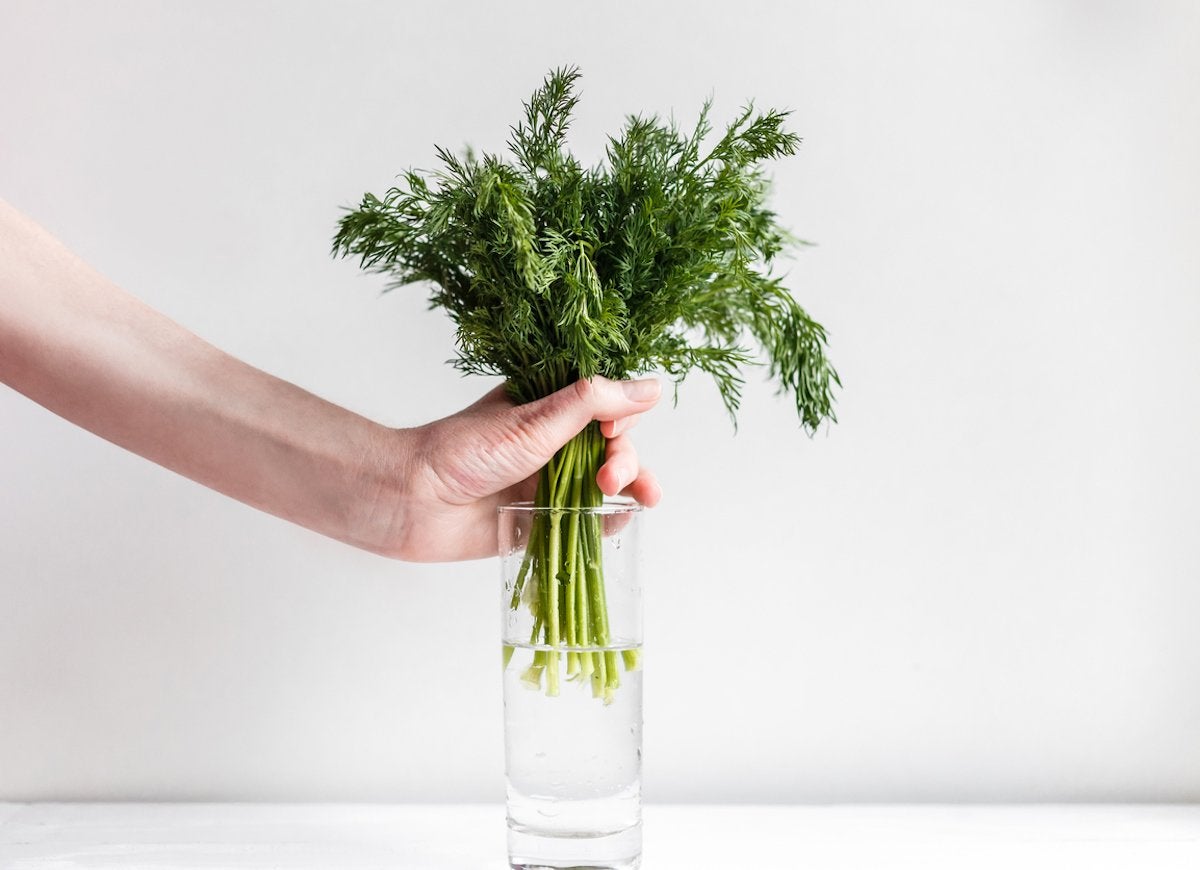
Did you know the average American family of four throws away 25% of the food sitting in their fridge, pantry, and freezer? All that rubbish costs the average family more than $2000 in grocery money every year. Save your hard earned cash and reduce your waste by halving big-batch recipes to feed your brood, or freezing a portion of leftovers to thaw later for a quick midweek meal. Lengthen the life of your produce by storing it properly—green onions, broccoli, herbs, asparagus, and celery can be kept upright in a glass tumbler with an inch or two of water at the bottom. The plants take up water through their stalks, keeping them crisp and tasty for a few days longer that if they’d been stored horizontally.
Party Responsibly
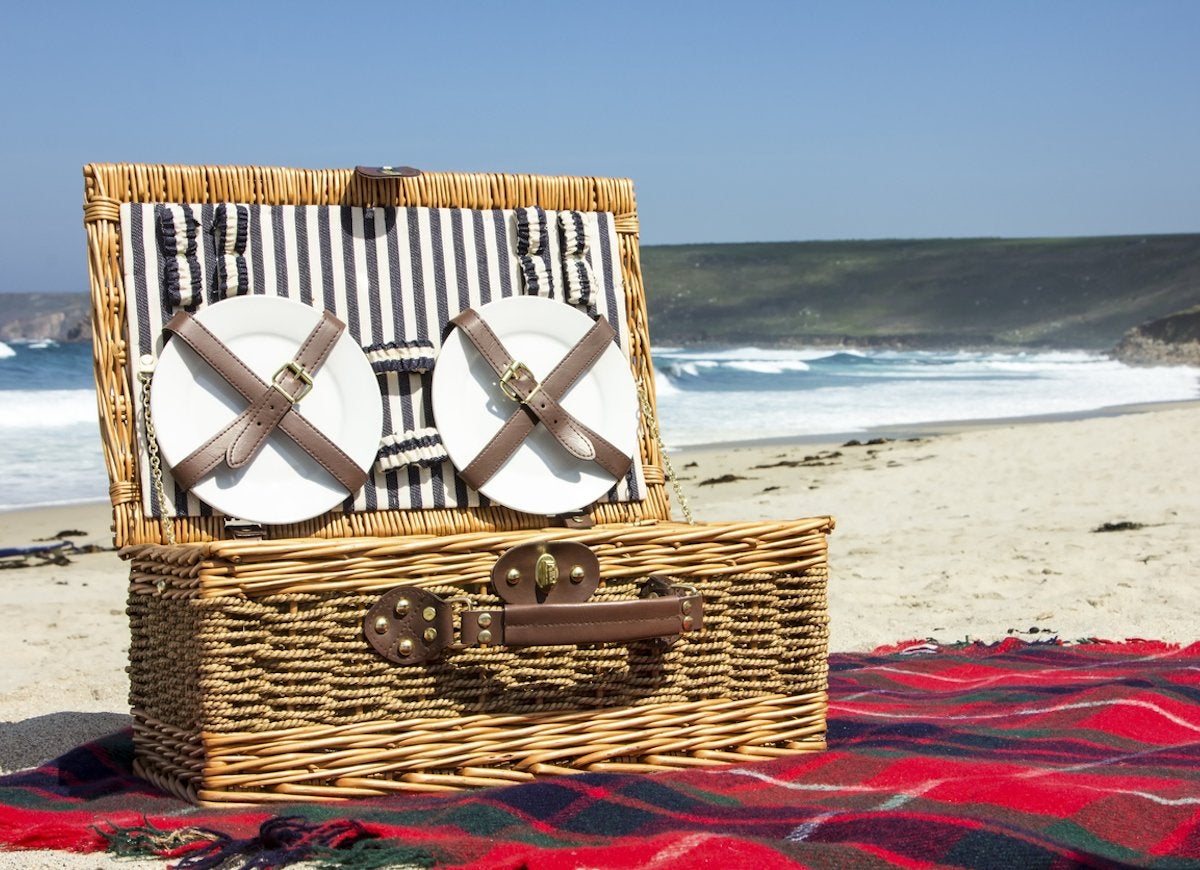
Paper plates, plastic silverware, disposable cups: They’re mainstays of the modern picnic and barbecue. But that wasn’t always the case. The switch to single-use dinnerware has been slow and steady, and expensive—both financially and environmentally. Next time you head for the backyard or the beach, opt for a reusable set of dishes, or carry a picnic basket with all the essentials included.
Add Some Sparkle
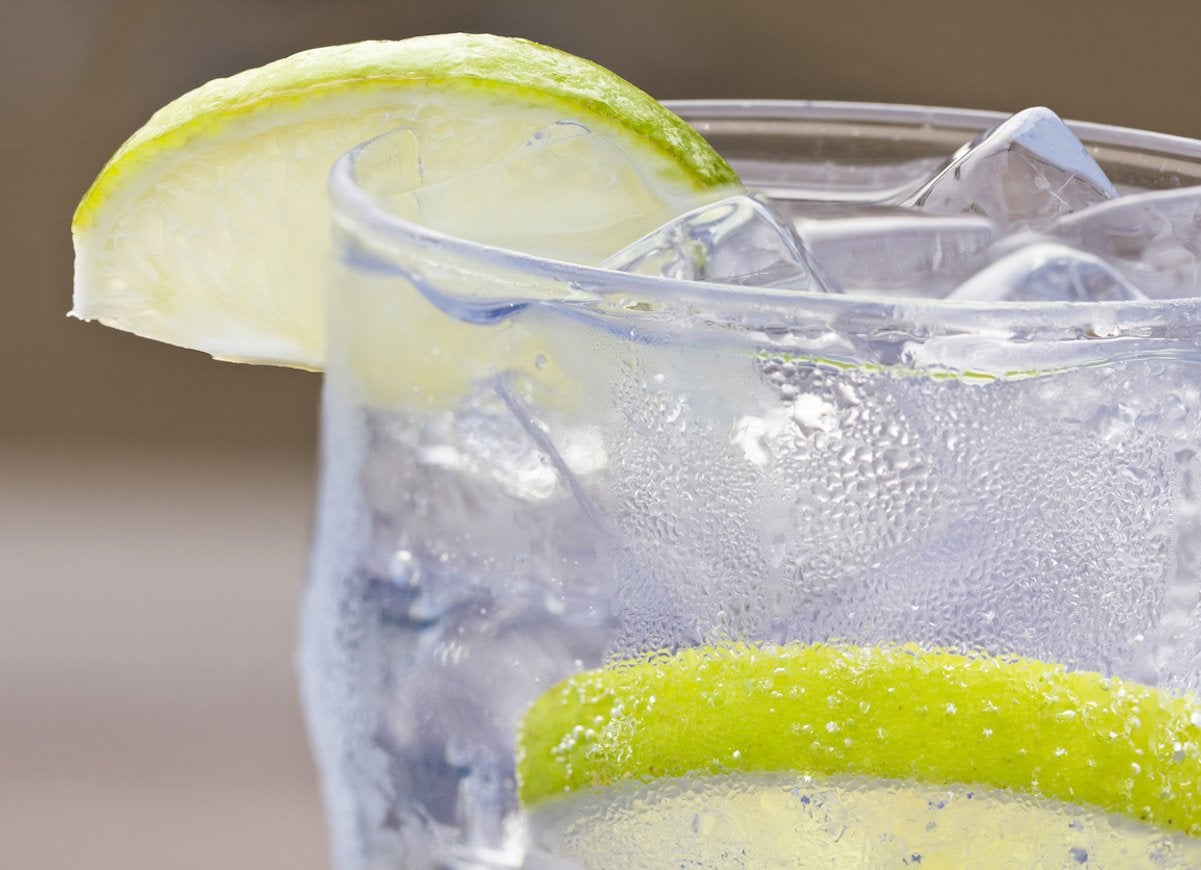
The popularity of bubbly water has skyrocketed in recent years—42% since 2012, according to NPR. The price of popularity, however, is an increase in waste in the form of glass and plastic bottles and aluminum cans. SodaStream water carbonators offer a solution that reduce the junk in your recycling bin and saves you money at the grocery store. With a recyclable CO2 cylinder and the push of the button, you can turn tap water into sparkling water to enjoy plain, with a splash of lime, or a dose of flavored syrup. No trash here!
Related: 15 Creative Uses for Club Soda
Tastes Better in Glass
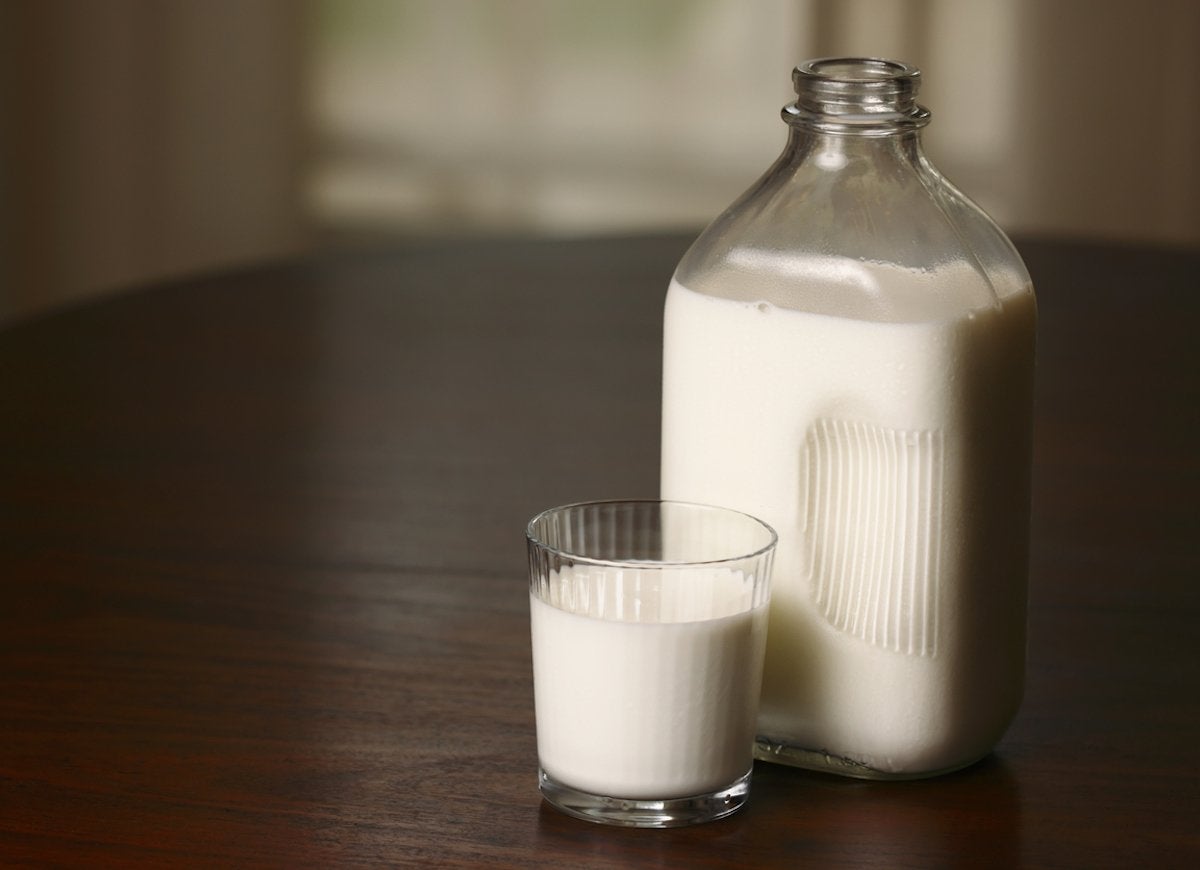
Time was, Americans would receive a regular delivery of fresh milk right to their doorstep. Farm fresh milk was packaged in glass bottles that consumers returned to be reused again and again. Today, you can still get the taste of the good old days (and reduce your waste) by picking up a bottle of milk at your local grocery store or market. These glass bottles often contain local milk that’s fresher than the other stuff, and may even come in a variety flavors from chocolate to strawberry. Return the glass bottles to the store to receive a cash deposit, and they’ll send the glass to the dairy to be sterilized and reused.
Go Package-Free
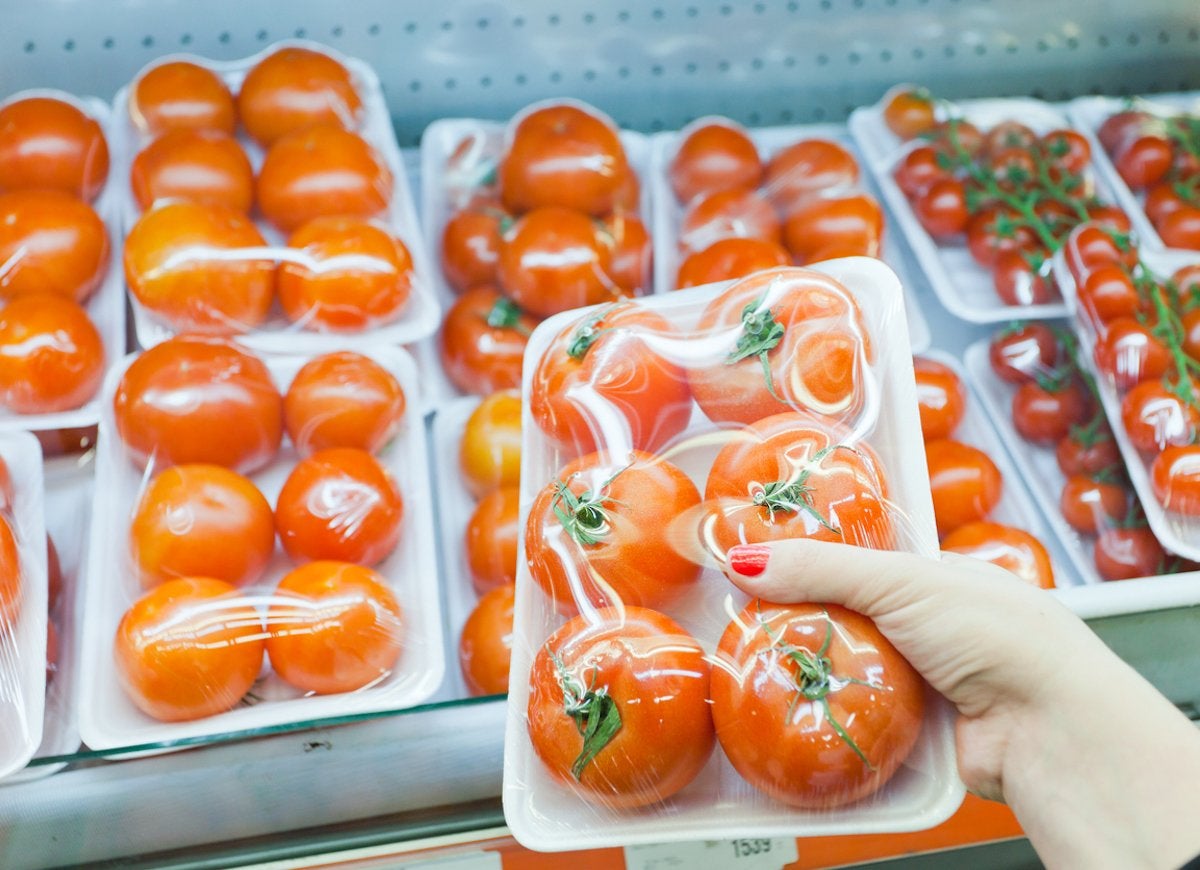
Just how much of your trash is made up of food packaging—from plastic wrappers to cardboard boxes? A quick glance at your garbage bin will reveal the answer. But you may be surprised at how easy it is to reduce the bulk of this waste. Individually packaged fruits and veggies and single portions of snacks or cereals may be convenient but they often cost more than bulk or family-size foods. Next time you browse the aisles, try to steer clear of processed foods, which often come with lots of packaging, or buy nonperishable foods in the largest packages available. Shopping smarter means you’ll save money and eat healthier, too.
Say Goodbye to Junk Mail
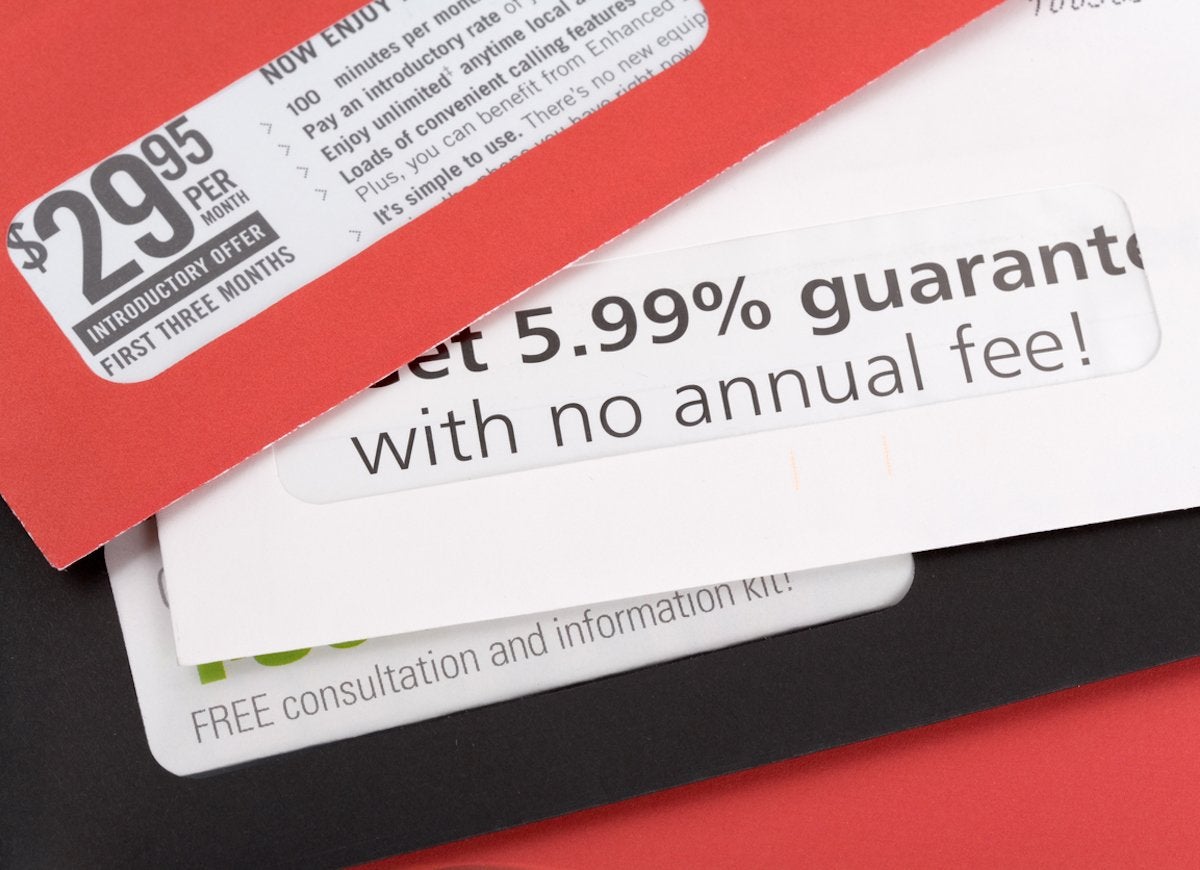
Does anyone actually like junk mail? We didn’t think so. Luckily, the power to stop the endless barrage of credit card offers, catalogs, and special deals is in your hands. Stop by the Federal Trade Commission’s website for more details, and start enjoying a decluttered mailbox—and recycling bin.
Skip the Straw
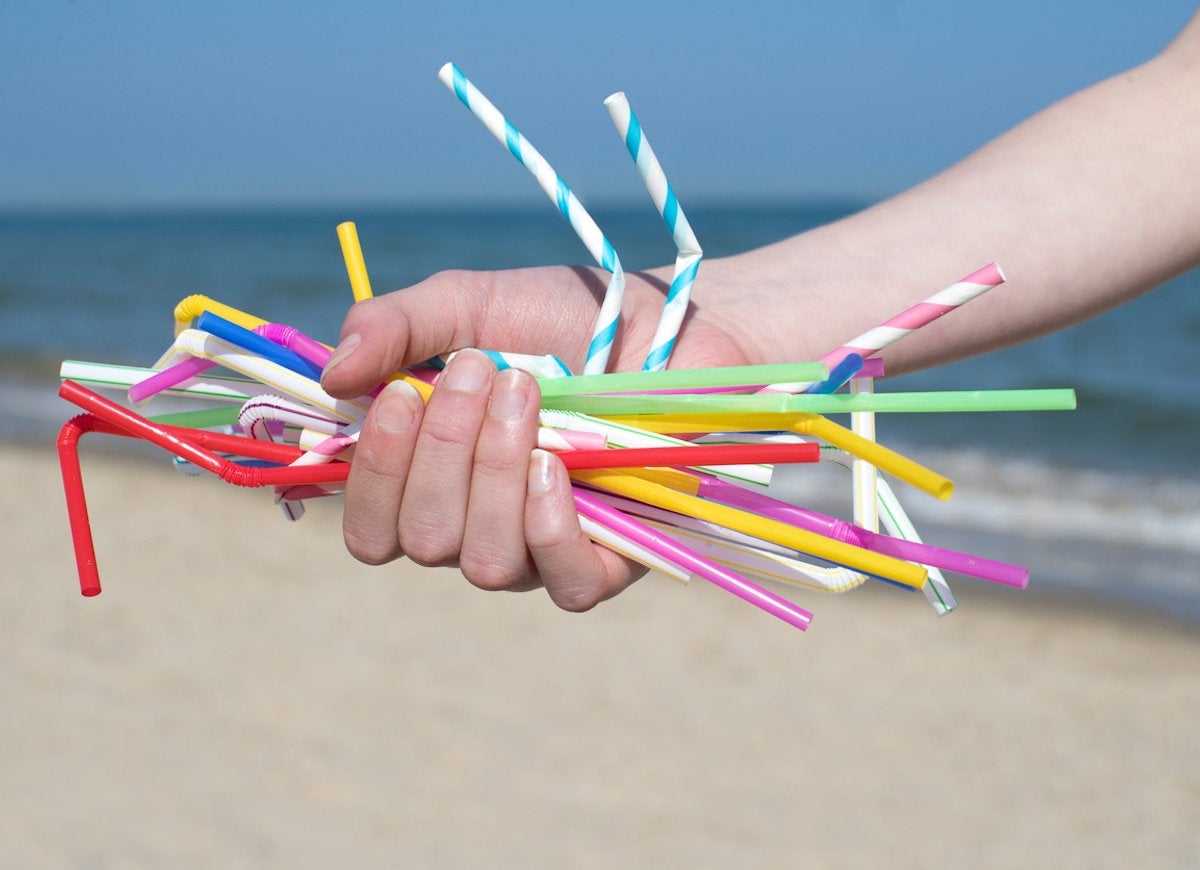
Half a billion: That’s the number of plastic straws used by Americans each and every day. Those little pieces of plastic are not recyclable, and when they’re not sent to the landfill, they’re often blown into city parks, streams, beaches, and oceans where they’re consumed by wildlife. If you’re not ready to ditch the straw completely, try a reusable option like these reusable silicone and metal alternatives. Use them at home or the coffee shop, then give them a quick scrub with the included straw cleaner, or pop them in the dishwasher. Voilà! No more plastic.
Support Your Local Library

Buy a novel and read it once—for most readers that’s the normal way of things. If you’re a devoted bookworm, chances are you have a hefty collection of tomes cluttering your bookshelves, and while an extensive library will make you the envy of bibliophiles, those books take up precious storage space and if you choose to donate them to a thrift store someday, they’ll often end up in the trash. If you plan on reading that Dickens story once and striking it from your booklist, consider checking it out at the local library rather than buying it at the bookstore. You’ll save money and paper, all while supporting your community.
Switch to a Safety Razor
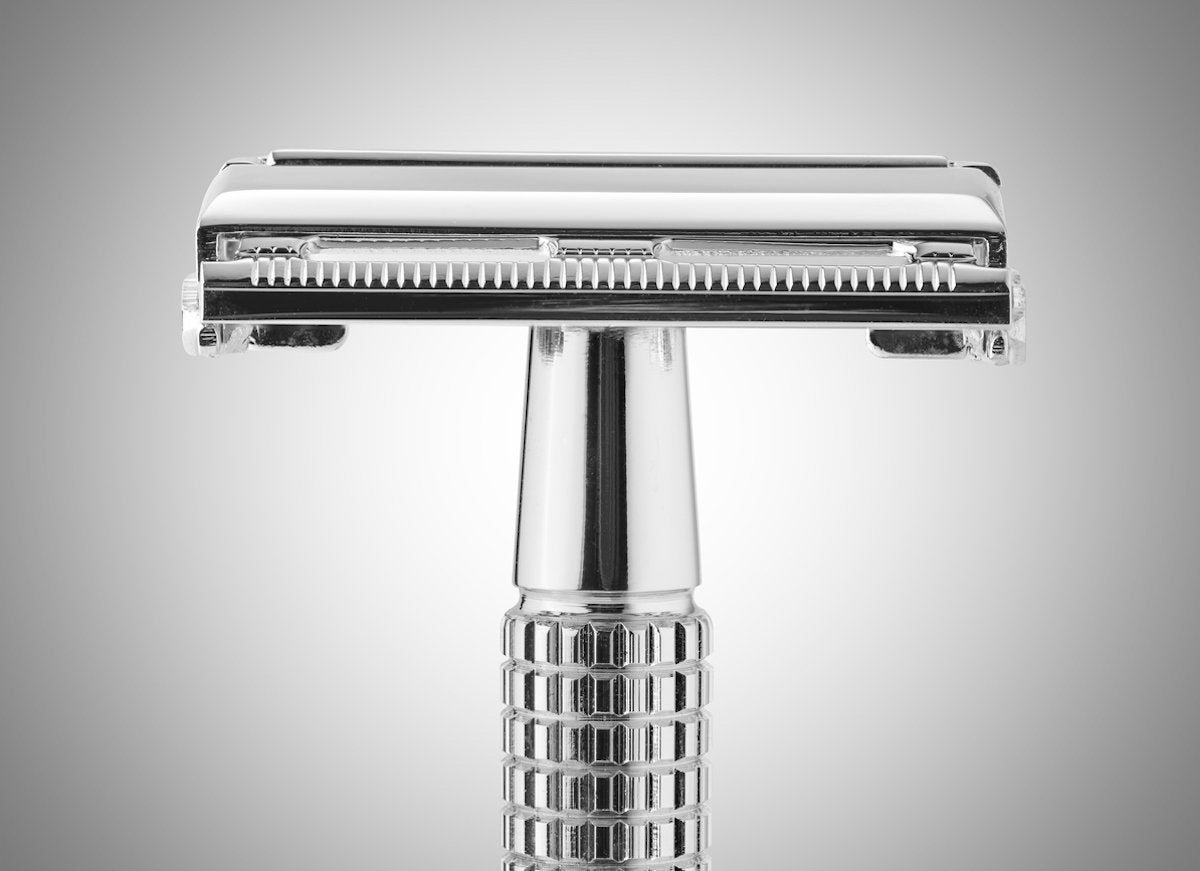
Two billion razors are sent to American landfills every year, according to the EPA. Plastic razors aren’t recyclable, which is why environmentally minded shavers are switching to safety razors. Both economical and environmentally sound, safety razors can be reused indefinitely, and the razor blades, which can be swapped when dull, are fully recyclable.
Work with Real Towels
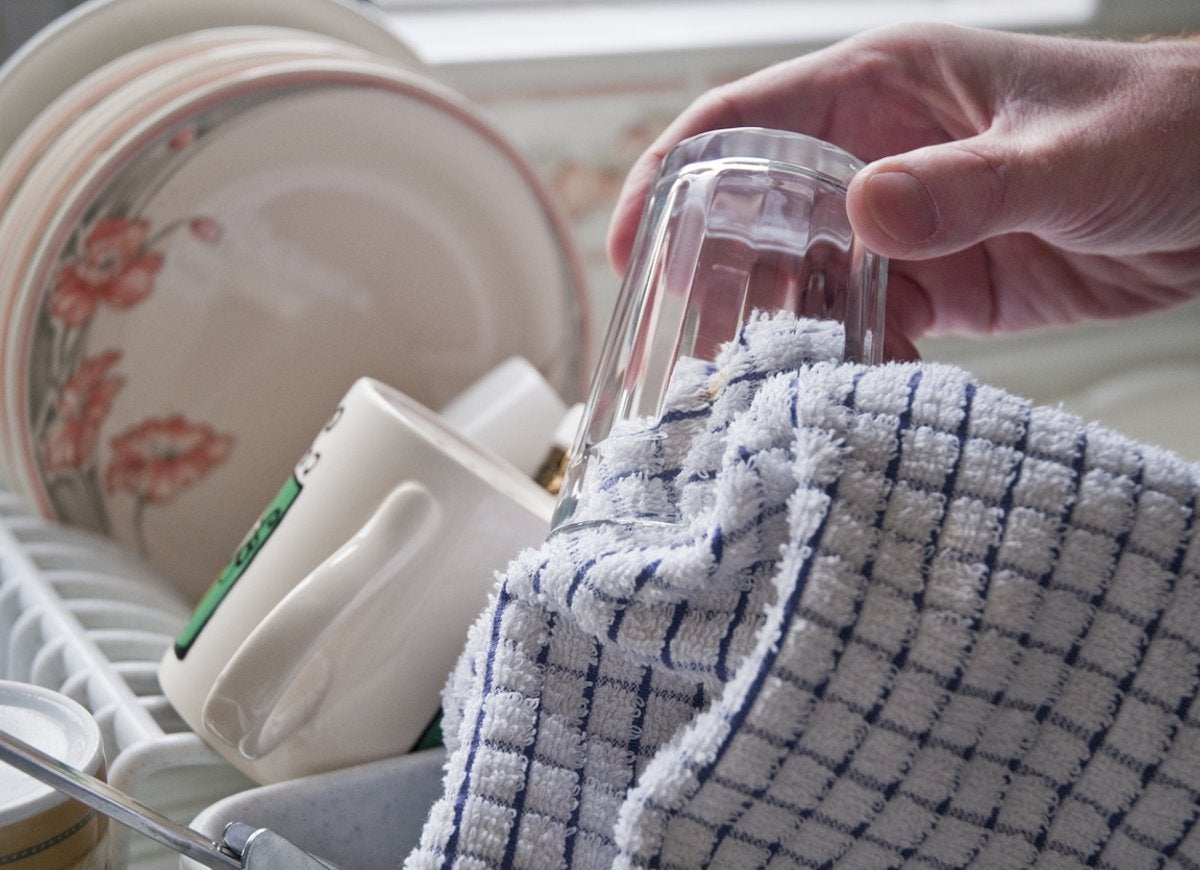
How did Americans ever live without paper towels? Well, quite easily, in fact. If you want to spend less and waste less, switch to cloth towels in the kitchen for drying dishes, hands, and other surfaces. On cleaning day, instead of wiping windows, mirrors, and fixtures with paper towels, try microfiber cloths instead. Not only are they effective and waste-free, but they don’t leave paper fibers or streaks behind.
Reuse Your Wraps
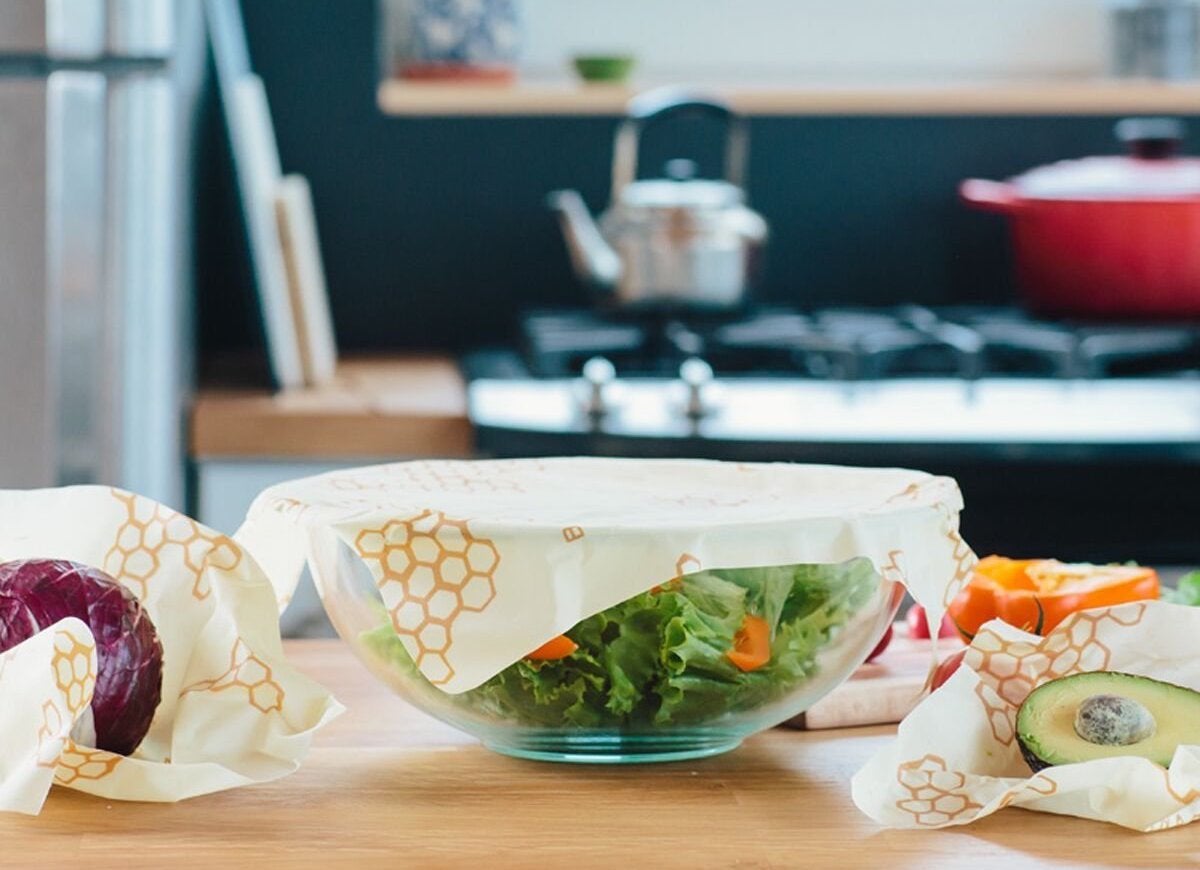
Plastic wrap can help you keep leftover foods fresher longer, but it’s not the most sustainable solution. Instead of loading up on plastic wrap every month, try an alternative solution like these reusable wraps made of cloth and food-grade beeswax, or a set of silicone lids that can conform to fit any container in your kitchen—or even a cross-cut watermelon!
Beg or Borrow
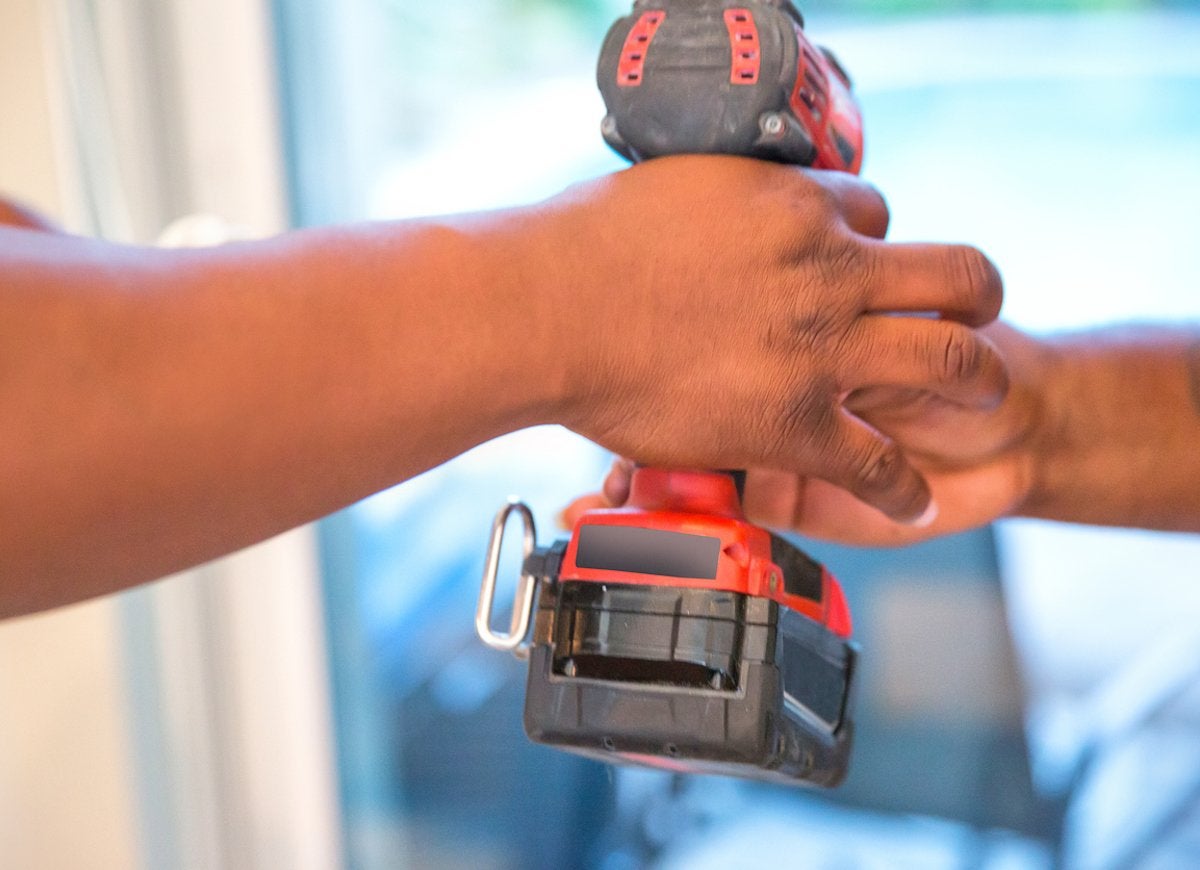
Here’s a simple reason to get friendly with your neighbors: Rather than buying new power tools you won’t use very often, ask a friend to use theirs. If you’d rather not test your relationship by asking for the favor, you may be able to rent the tool for free (some public libraries offer tool rentals). For every item you borrow, that’s potentially one less item that ends up in the landfill when it breaks.
Make Do and Mend
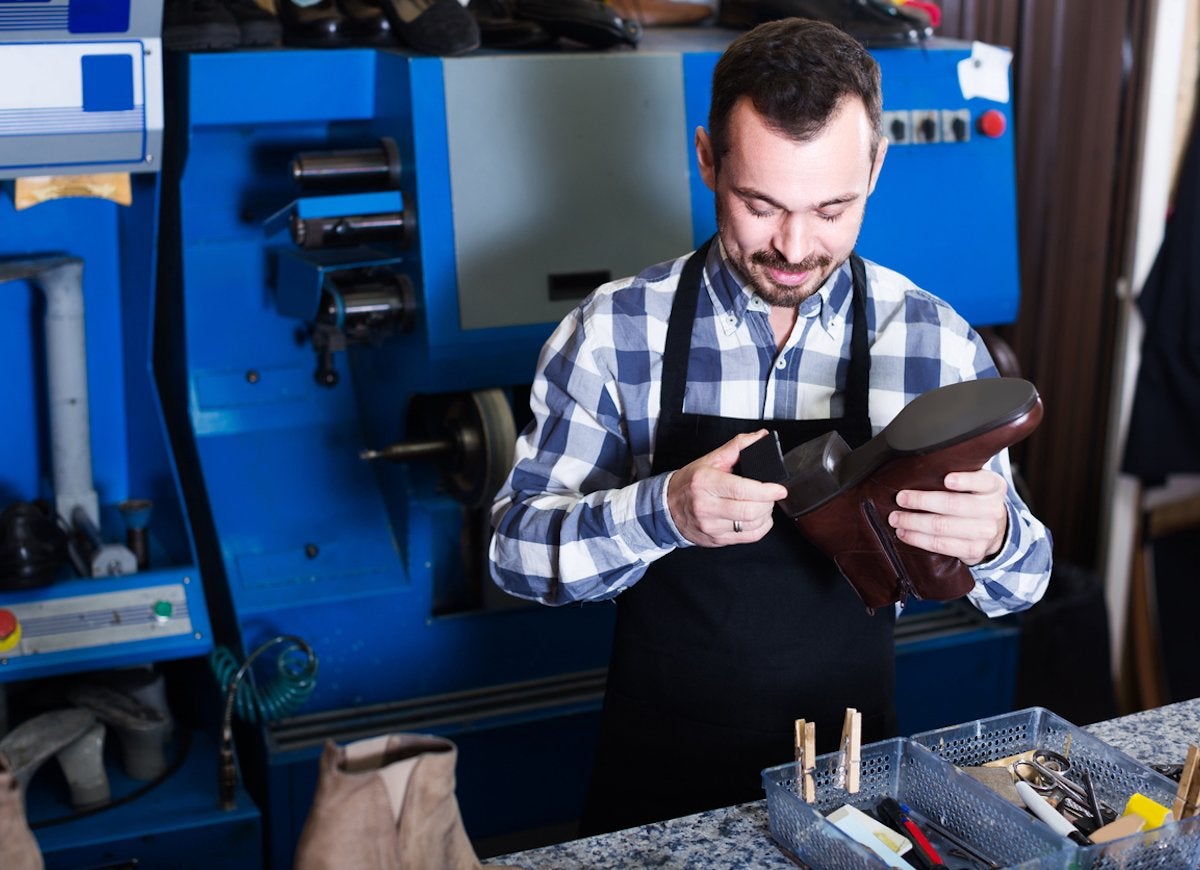
Speaking of breaking, it pays to repair your broken items—in terms of both environmental and financial impacts. Next time your boots start to look a little thin on the soles, or the zipper on your jeans malfunctions, try to fix the item before sending it to the landfill. In some cases, you may be able to make the repairs yourself with the help of an online tutorial, or you can take the item to a qualified repair shop that will fix the item for less than the cost of a new product.
Related: 21 Money-Saving Tricks That Every Homeowner Needs to Know
Stick to Bar Soap
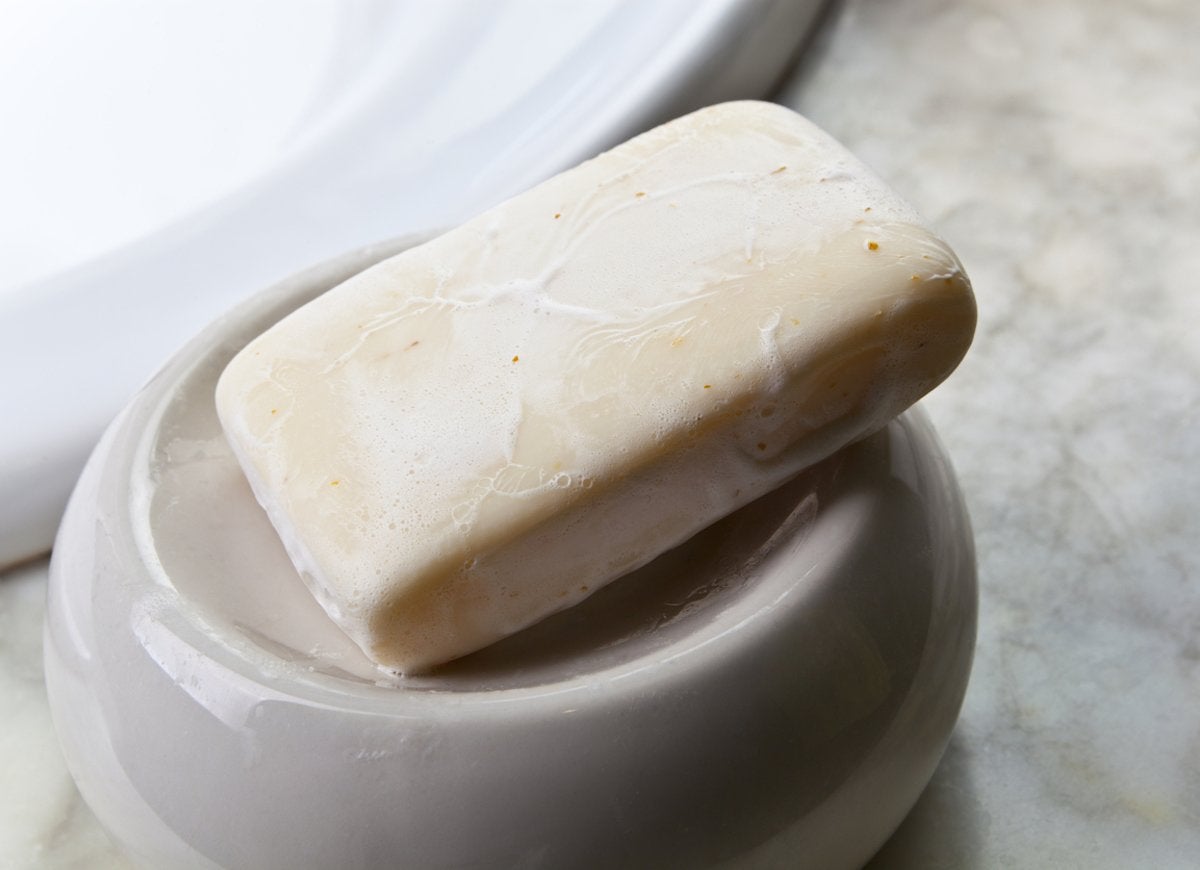
You may love the scent of your liquid body wash but that luscious soap comes at a cost. Although the plastic containers that hold your cleansers can be recycled, there’s a limit to how much waste municipal recycling centers can handle. Here’s a dirty secret about recycling: Due to contamination, only 60 to 80% of recycling center waste is actually recycled, according to a paper published by Columbia University. So, reduce your waste and switch to package-free (or minimally packaged) bar soap—it cleans just as well as liquid soap.
Recycle
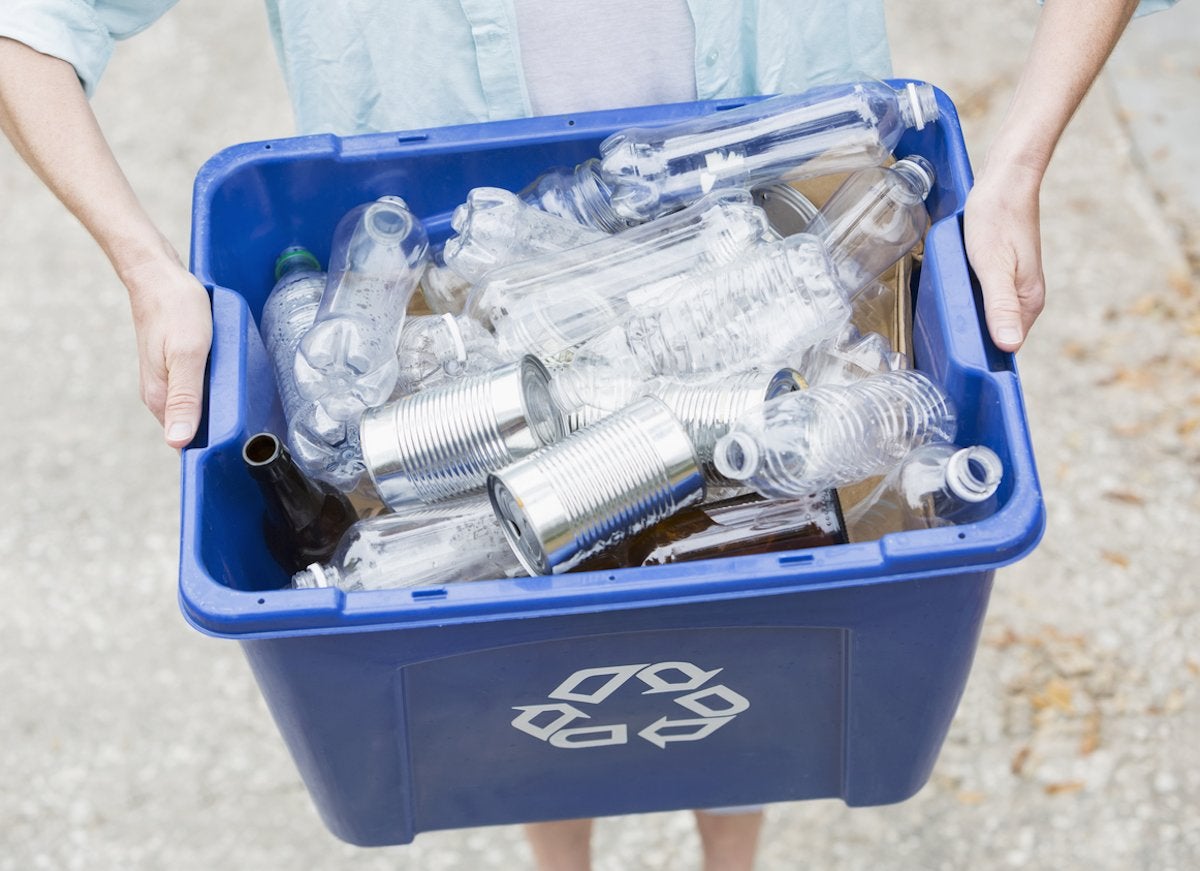
Just because some recyclables are thrown away at municipal recycling centers, doesn’t mean you should stop recycling. Practice good recycling hygiene by rinsing containers, separating materials, and keeping unrecyclables off the curb. Different municipalities have different guidelines about how to clean, separate, and recycle your waste, so check with your local office to get the facts.
Give Away the Goods
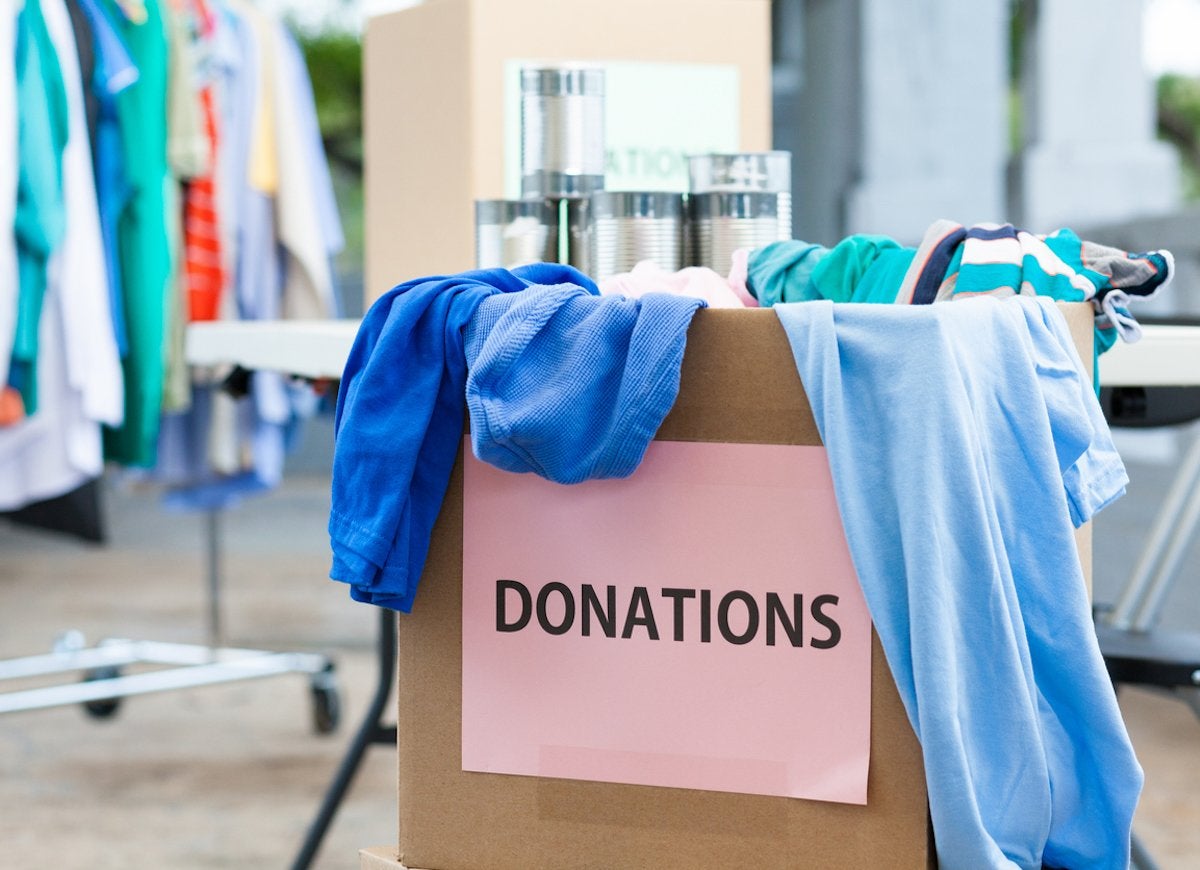
It’s incredible just how much junk can accumulate over the course of a year. That’s why many homeowners declutter on at least an annual basis to clear out closets, storage units, and cupboards. Although it may seem expedient to toss all those unwanted items in the trash, the more responsible choice is to give them away to a good home. You can list your items on an online classifieds website like Freecycle to encourage nearby residents to pick up your junk, or call a shelter or organization to pick up any large items like furniture or electronics.
Compost Your Toothbrush
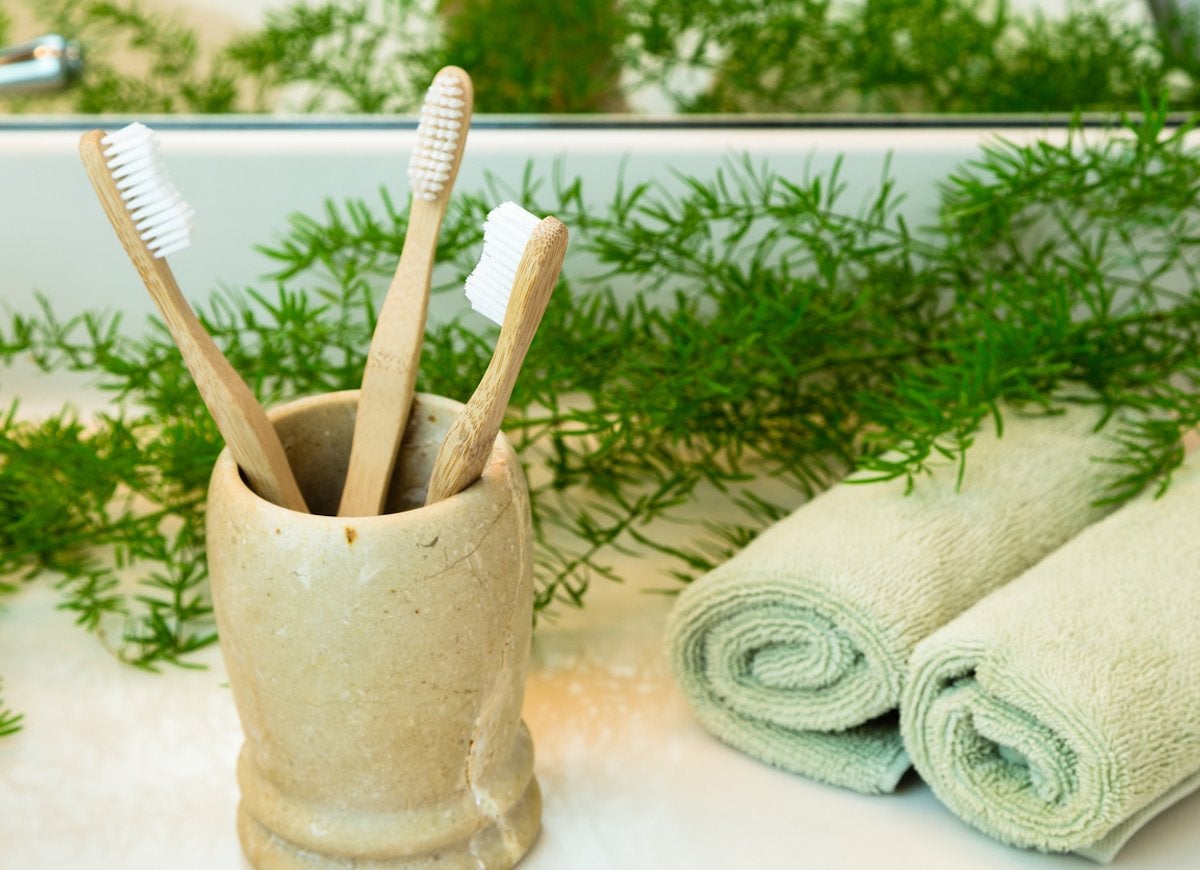
Here’s the good news: Based on the number of toothbrushes Americans use every year, they seem to be practicing good dental hygiene. Now the bad news: That good hygiene results in 1 billion toothbrushes being thrown out every year. If you’re ready to ditch plastic toothbrushes, which most municipalities won’t recycle, you can switch to biodegradable bamboo toothbrushes. These antimicrobial brushes can be tossed in the compost pile when you’re done with them, and will gradually break down in a well-kept compost pile over the course of a few months.
Move Waste-Free
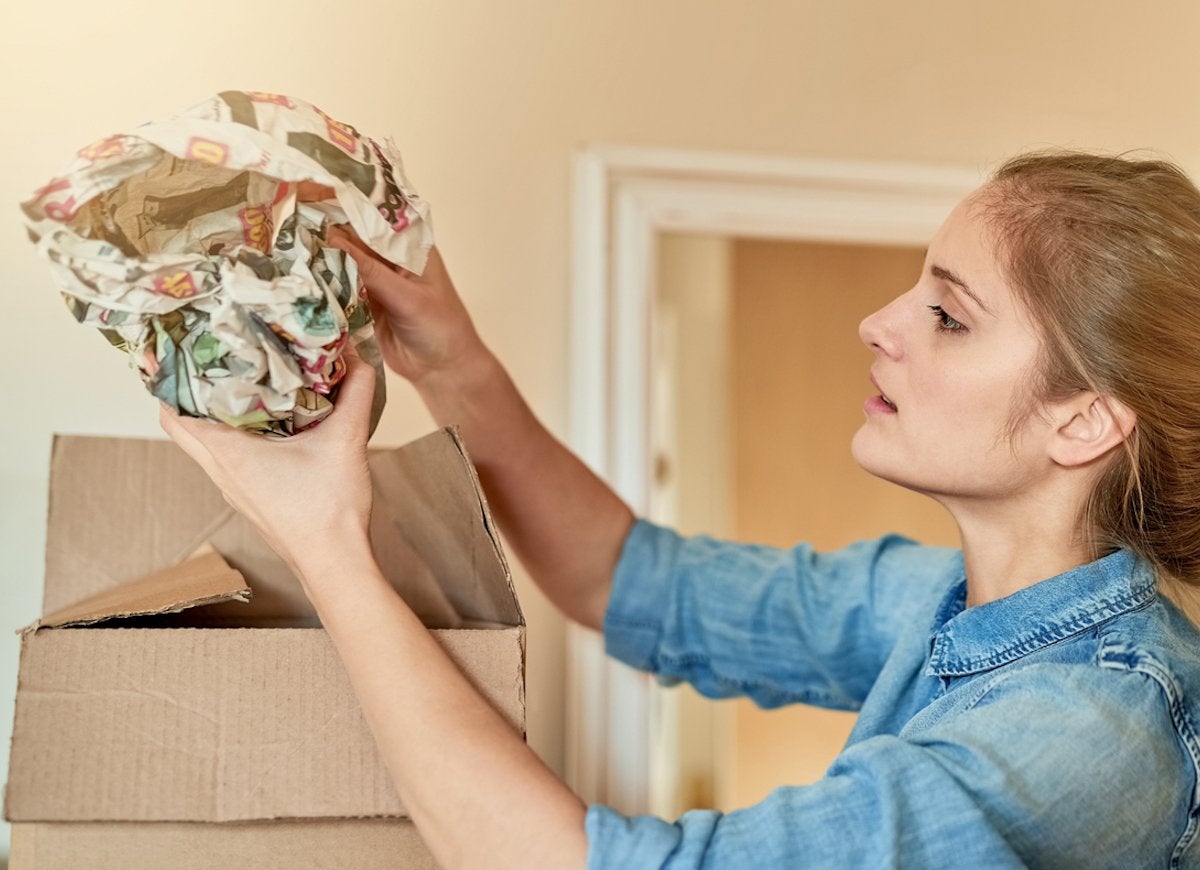
While you can’t take the sting out of an inconvenient move, you can remove the plastic. Next time you’re faced with the reality of packing up your entire life, skip the bubble wrap and instead cushion fragile items with old newspaper or cloth towels. These materials work just as well as plastic wrap and won’t cost you a penny. Plus, it’s one less thing you have to toss when you get to your new digs.
Compost It
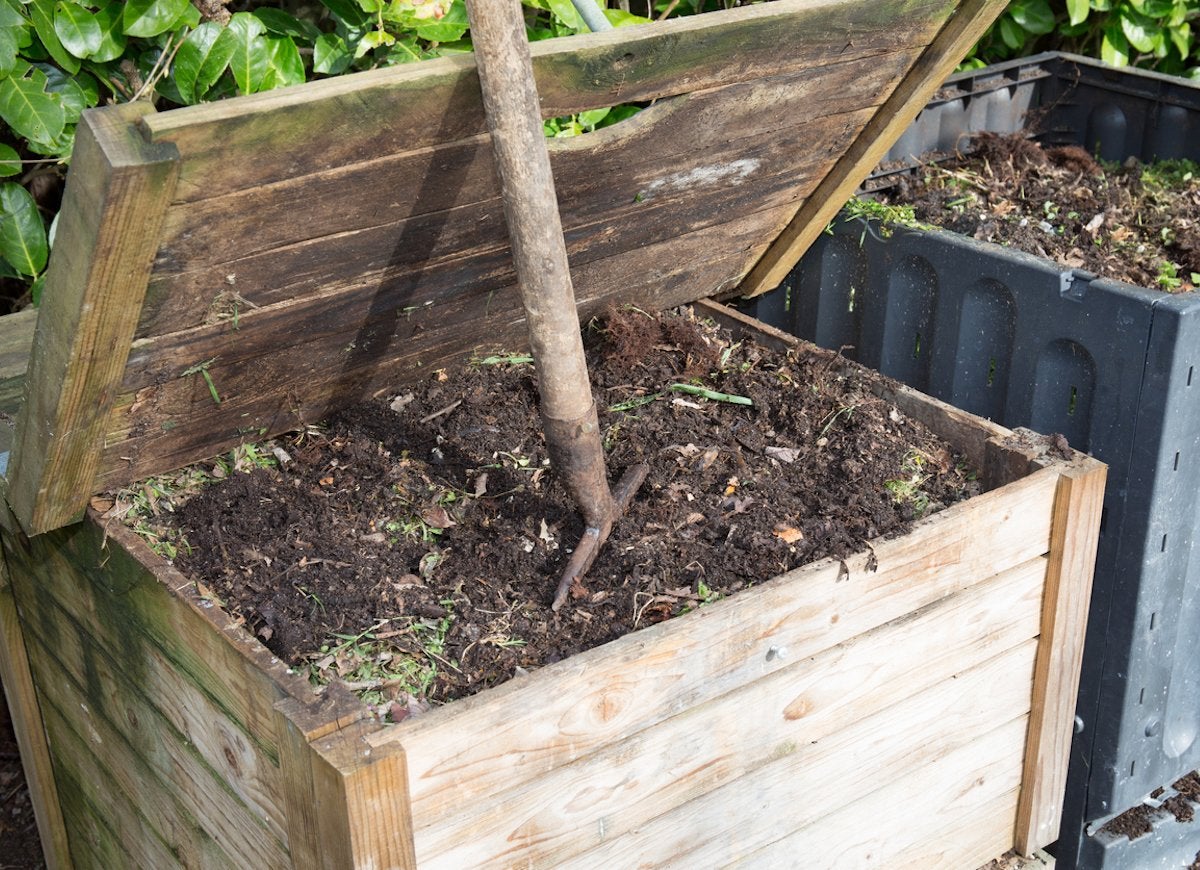
If you’re not reusing your food scraps, you might want to start now. It’s the kind of resourceful activity that can actually save you money—and keep more waste out of your trash. The Kitchn recommends turning potato peels into crispy chips, and vegetable peels and scraps can be boiled into a rich stock for soups, and citrus peels can be mixed with vinegar to make a powerful DIY cleaning solution. If you can’t reuse your food scraps, you can send them to the compost pile. You’ll be rewarded with nutrient-rich soil to use in your garden beds—and you’ll quickly notice that your trash can will smell a lot less foul when it’s not packed with food waste.
Related: Composting 101: How to Put Kitchen and Yard Waste to Work in Your Garden
Get a Smaller Trash Can
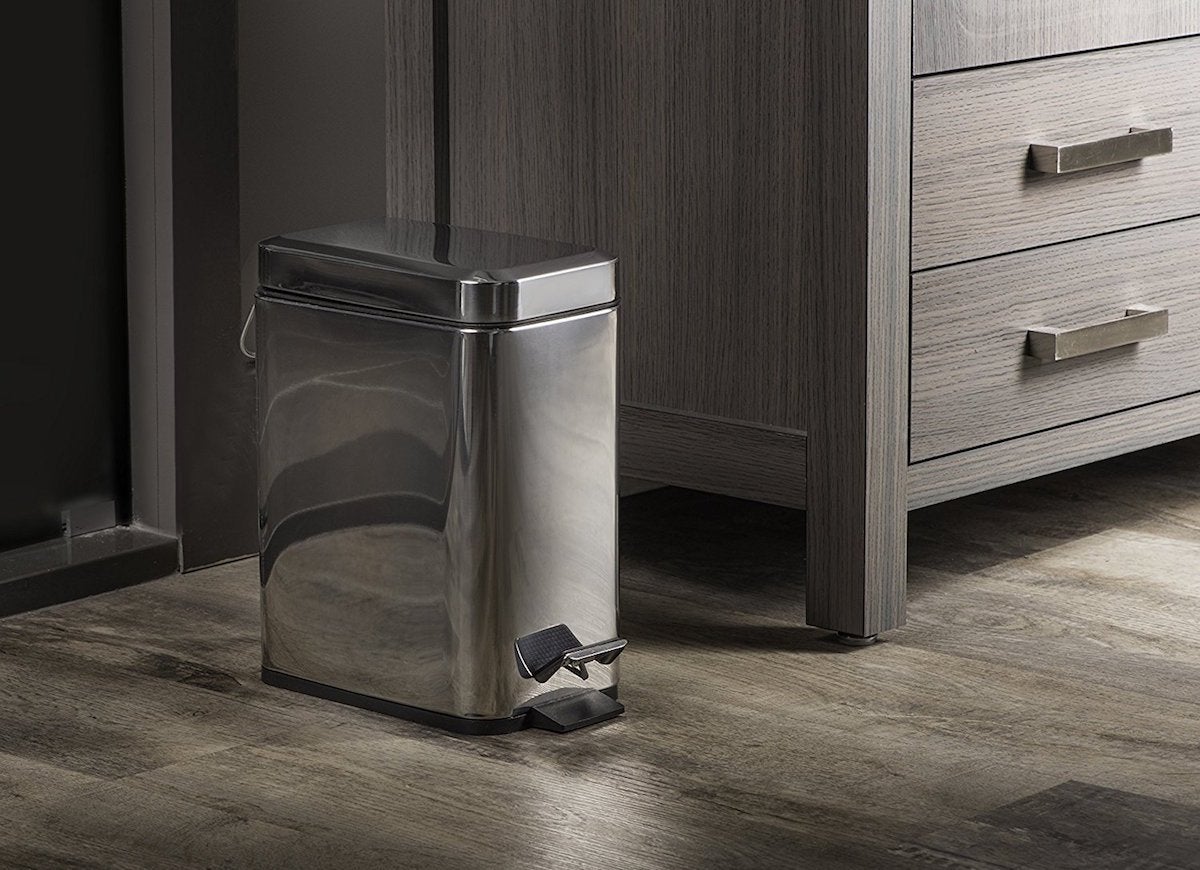
Are you resolved to create less trash? Then you might want to make a symbolic gesture of your commitment by buying a smaller trash can. Keep larger bins nearby to hold recyclables and reserve the smaller can for items that can’t be reused, donated, recycled, or composted. You’re well on your way to a greener and healthier life!
Easy Being Green
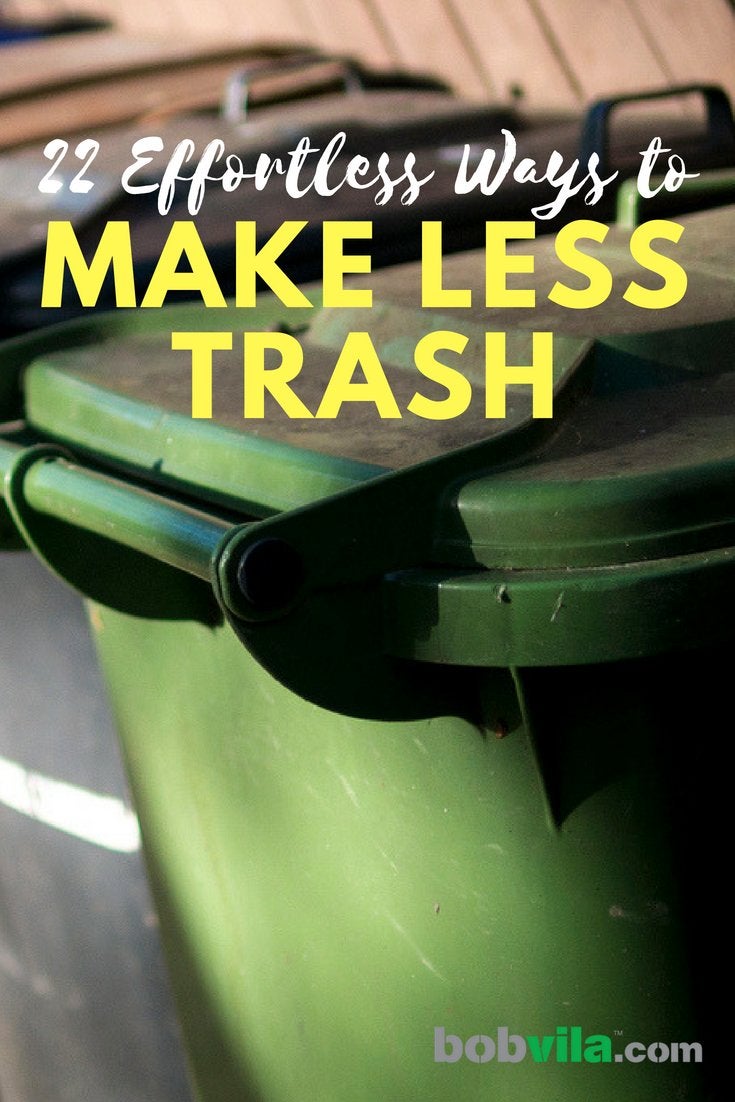
You might think adjusting to an eco-friendly lifestyle is costly or a challenge, but these ideas prove that there are some very simple changes you can make!

A DIYer’s Guide to Replacing Flooring
Update the look and feel of any room by replacing old, worn-out flooring. These products and straightforward steps make it easy enough for any handy homeowner to do.

